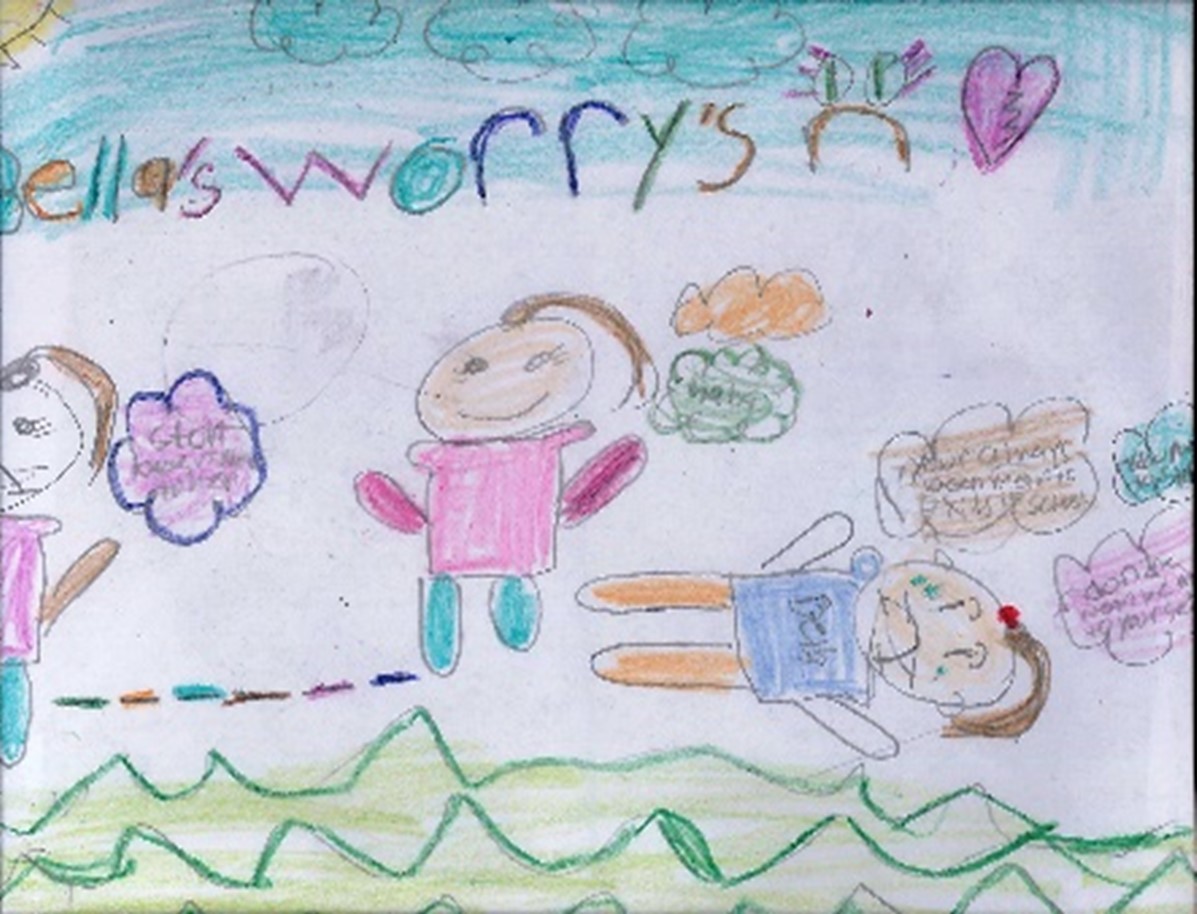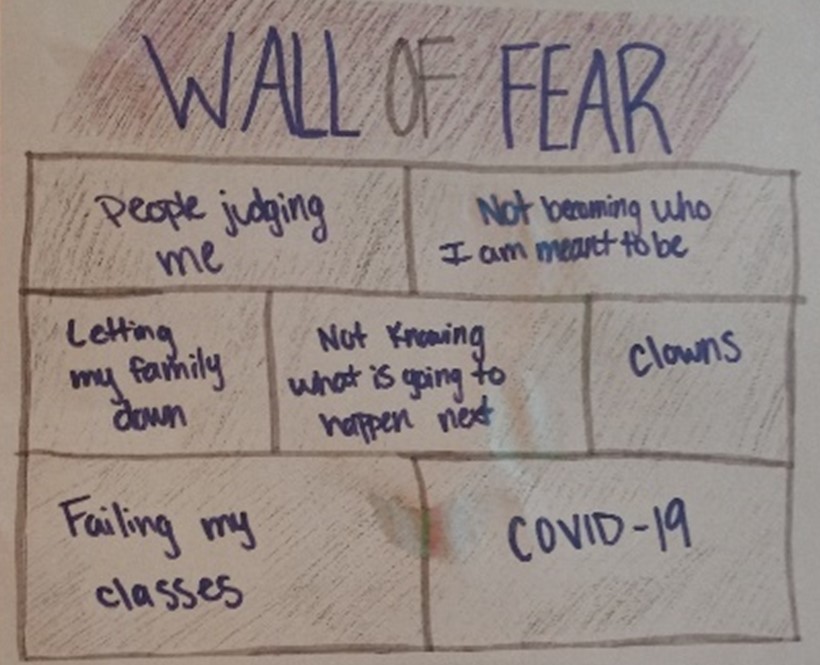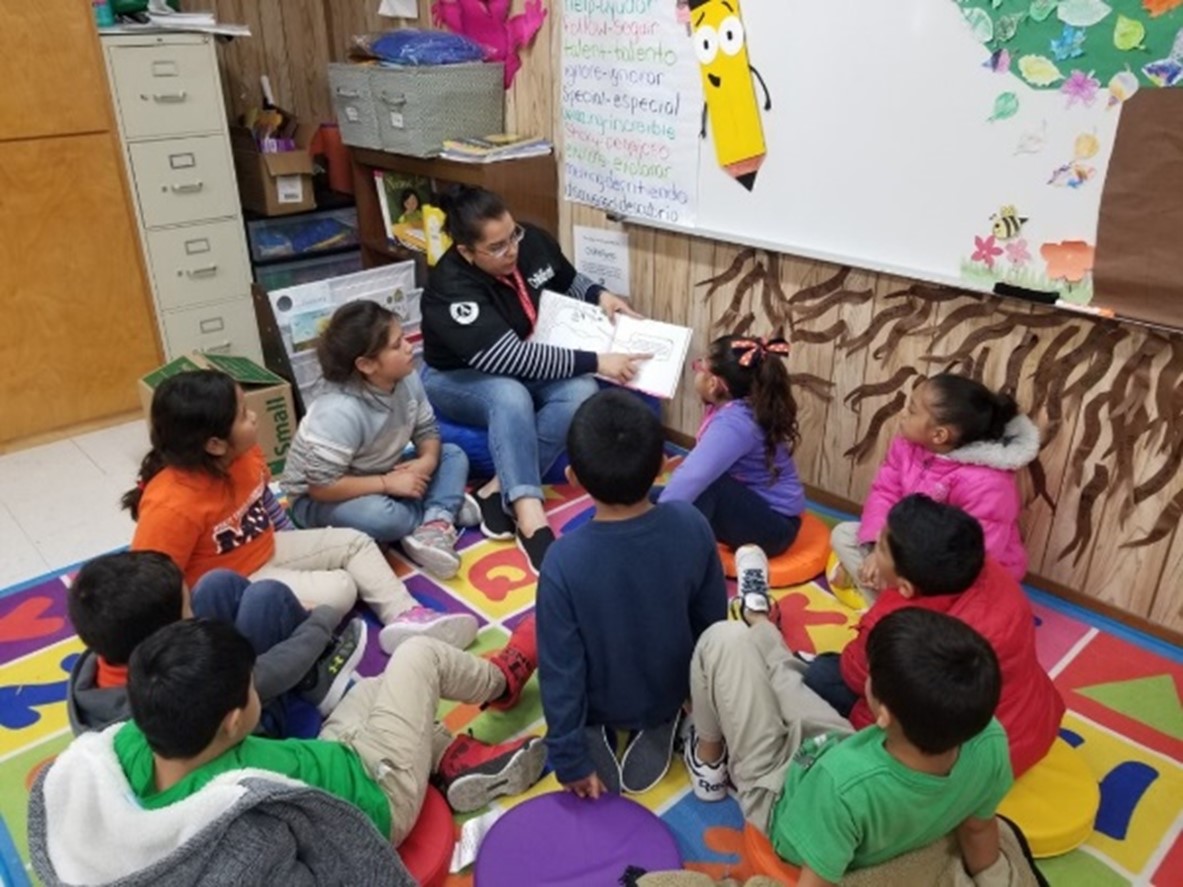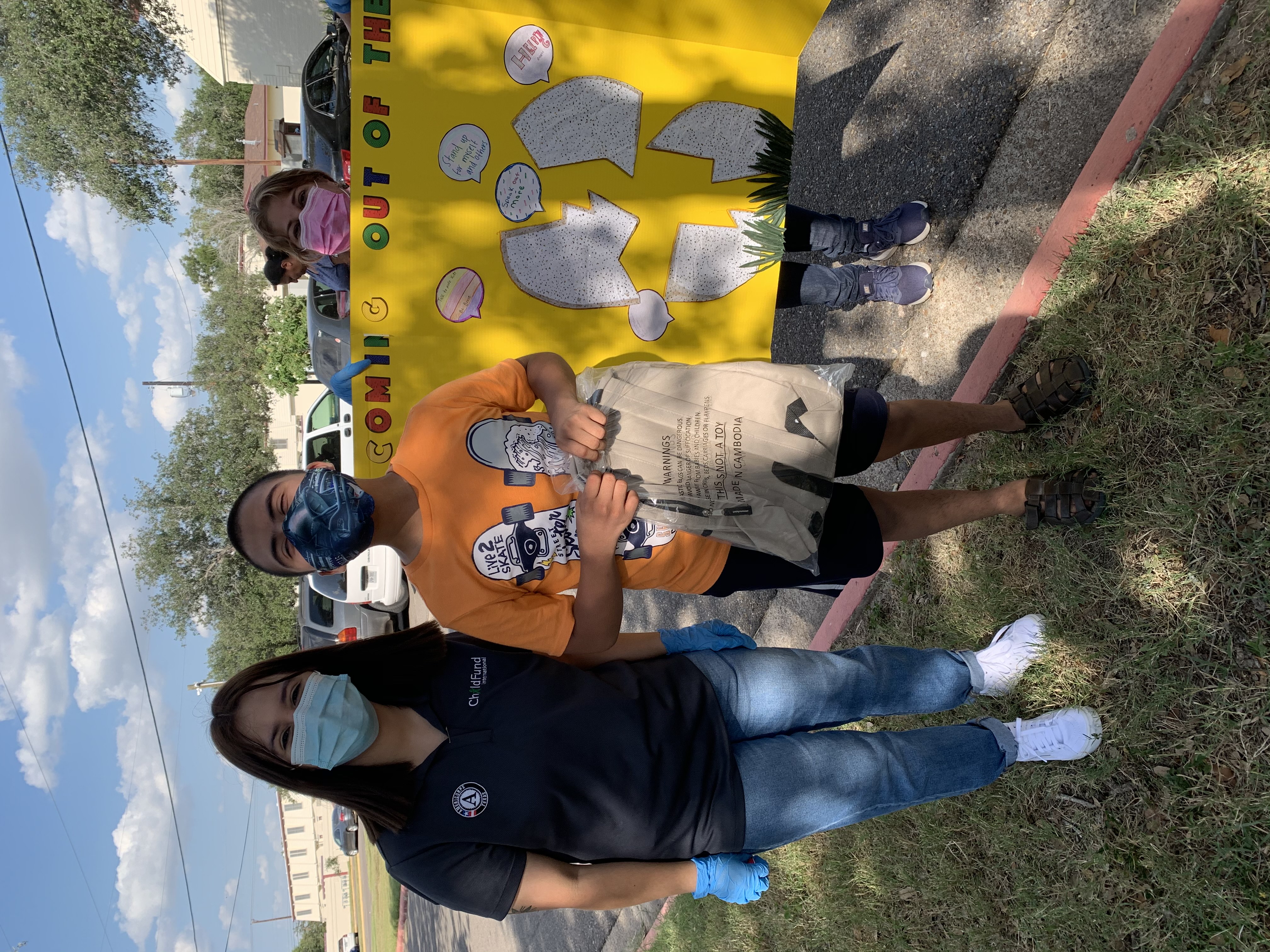Site will be
unavailable for maintenance from June. 4, 11:30 p.m., to June 5, 12:30 a.m. ET. Thank you for your
patience!
Reimagining the possible: The role of creativity in child development
Posted on 10/27/2020
By Julia Campbell, Manager, ChildFund U.S. Programs
All children are creative. Period.
Unfortunately, adults – and society itself – sometimes have a way of inhibiting kids’ natural ability and desire to create freely. All too often, we limit opportunities for them to explore their feelings honestly and just be themselves. We relegate kids’ creativity to certain activities or spaces, boxing it within narrow boundaries and timeframes instead of seeing it for what it is: something delightfully spontaneous that can happen anywhere, at any time, and can help children overcome any obstacle they face in life.
One of the main reasons I love working for ChildFund is because I get so many opportunities to engage with, listen to and learn from children. ChildFund’s work here in the U.S. (as well as in many other countries) is all about giving children “safe spaces” to figure out how to navigate the complex and often scary world they live in – and to figure out what they have to offer that world. We do this by providing opportunities for creative self-expression, whether verbally, artistically or in writing.

This drawing by a child in our U.S. programs – Bella, age 8 – expresses
the artist’s worries about bullying. In the image, one girl is making fun
of Bella, while another girl is standing up to the bully, telling her to stop.
Meanwhile, Bella is using the self-care tactics she learned in ChildFund
workshops to remind herself, “Don’t be mean to yourself.”
ChildFund’s programs in the U.S. – specifically, Texas, Mississippi and, most recently, Virginia – are designed to give kids a break from the stress and anxiety that so many of them face on a day-to-day basis, helping them understand that their feelings and voices matter: They have something to say and to contribute, regardless of their socioeconomic status, racial background or past traumas.
So what does all this look like in practice? Here are just a few examples from ChildFund’s programming in the Rio Grande Valley of Texas.

A handful of the fears children expressed during the Wall of Fear activity,
which ChildFund Texas designed as part of the unit on overcoming obstacles.
The activity is based on the book After the Fall: How Humpty Dumpty
Got Back Up by Dan Santat, in which the storybook character Humpty Dumpty
falls off of a wall and must figure out how to put himself back together.
The book, as well as the activity, helps children express their deepest fears
– then share them so they know they’re not alone
Overcome obstacles through Dream Corners and more
In the Rio Grande Valley, where child poverty rates are nearly twice as high as they are in the rest of the state, one of our programs uses books and storytelling as tools to help kids cope with the stress that can often accompany the challenges of poverty – for example, housing and food insecurity, domestic or neighborhood violence, even the unique threat of family separation. Once a week, ChildFund-affiliated members of AmeriCorps – a national community service organization that recently awarded ChildFund a grant to assist with human resource needs – meet with children in a small group to read stories together that have positive messages about overcoming problems, managing emotions and developing healthy self-esteem. Then the children participate in creative group activities based on the books, encouraging them to explore their own experiences with these themes. They sing and dance out their emotions, make art to illustrate their identities, and even write stories of their own to dig into their fears. We like to call these special groups “Dream Corners” because they pave the way for children to reimagine the circumstances that limit them and reach for their dreams, whatever they may be.

A ChildFund AmeriCorps member reads a story to children
during a Dream Corner session in the Rio Grande Valley.
Stories, you see, allow us a natural way to address the various traumas that children face. When children see themselves reflected in books and take journeys alongside characters they relate to, they feel less alone and imagine new possibilities for themselves. In the same way, when a child writes a story – as many children recently did when participating in the #MyScariestMonster creative writing contest that ChildFund hosted along with beloved children’s author R.L. Stine – they’re giving shape to thoughts and feelings that may have been muddled before. This growing self-awareness provides the foundation for increased acceptance of emotions and greater resilience against future challenges.
Do kids find meaning in these creative activities? Well, let’s ask the kids. In a recent survey we conducted with children from various neighborhoods in the Rio Grande Valley, we learned that the chance to activate and amplify their creativity was actually one of kids’ most persistent needs and interests, especially during the pandemic. In response, ChildFund developed the Rio Grande Valley Expression Program.
The Power of Creative Expression
- Promotes cognitive skills including numeracy, independent thinking and problem-solving
- Builds emotional development, helping children communicate their feelings and learn how to deal with them appropriately
- Supports language, vocabulary and literacy development
- Helps children develop fine and gross motor skills
- Promotes better health and well-being
- Helps children learn about teamwork and consideration of others
- Provides opportunities for developing new interests
- Helps a child develop their unique personality
This unique program provides kids with a creativity scrapbox each month. The scrapbox contains all the arts and crafts supplies they’ll need to make a work of art that represents the monthly theme – for example, “My Community” or “The Sky’s the Limit.” The themes are narrow enough so that kids have ideas to work from, but broad enough so that they can let their creative spirits soar. After their work of art is finished, the children submit a photo or video of it to the Rio Grande Valley Expression Showcase, a virtual gallery walk on social media where peers, parents, teachers and even sponsors can view the artwork and encourage the young artists with shares, comments and likes.
To better reach kids who might have limited access to the internet and other ways of staying connected during the pandemic, we also launched a Mobile Workshop Truck that travels to outlying communities, tapping into the creative potential of kids who are normally excluded from such opportunities. The truck, staffed by caring adults, provides an inviting space, filled with music, art and books, where children can participate in activities that promote self-expression and self-care.

A ChildFund AmeriCorps member pauses for a photo with a child at the Mobile
Workshop Truck in front of an activity called “Coming Out of the Shell,” which is
designed to help kids describe how they can overcome some of their fears and obstacles.
The saving power of creativity
In my years at ChildFund, I have seen children who are labeled shy, withdrawn or even “troubled” come to life and respond positively when given the opportunity to express themselves in ways they might not be able to verbalize.
Once, back when ChildFund worked in South Dakota, I asked a group of teens to tell us what they thought about their community. At first, there was no response. It dawned on me that they were not used to anyone asking them what they thought. But when we gave them cameras – and a little bit of space and time to capture what they liked and didn’t like about their community – they came back with an impressive assortment of photos and all kinds of cohesive thoughts. They were able to passionately share their feelings about their community through the photos and through their words.
When we give children the chance to express themselves, they can and do make tremendous headway against even the most formidable obstacles in life. We at ChildFund are always amazed to see what a child’s creations tell us about their heroes, their fears, their hopes and dreams. Indeed, if you’d like a glimpse into your child’s world, invite them to get creative. It’s a surefire way to help them develop self-esteem, get in touch with their emotions and build resilience to life’s many challenges.
Loading...


